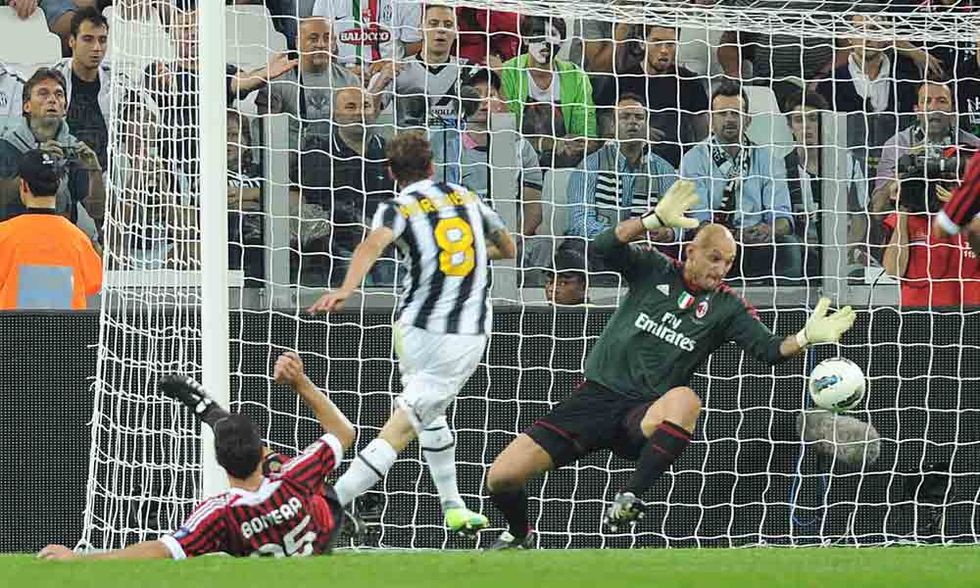Soccer isn't all we sell
After VIP seats for businesses, at the end of October there will be a shopping mall. Here is how the new Juventus stadium works. It still doesn’t have a sponsor.
Juventus fans have a home once again. A stadium with 41,000 seats, technologically advanced in many respects, and in perfect British style. It is the first stadium owned by an Italian football club. The dawn of a new age, awaiting a law (the Lolli-Butti law bill) that can, once and for all, shorten the time for the construction of sports facilities in Italy. It took all of 10 years to build the Juventus stadium from the time the idea was announced. Too long, due to the bureaucratic and administrative hoops it had to jump through, to enable us to hope in a new wave involving not only the biggest teams but also the medium and small clubs in the Italian provinces. New facilities are necessary to overcome Italian football's dependence on television revenues (they account for over 66% of the global business), but also a law that reduces construction time (to not over 3 years).
«At the end of the first season of our new stadium, we expect to generate earnings from the stadium of over 30 million euro» Francesco Gianello, Venue director, explains to Economy. «We are wagering on a new concept of corporate hospitality and the business partners of Juventus believe in it and are showing it already starting from this first season. This is an area of revenues (thanks to the 4,000 Juventus Premium Club seats) that will have an impact on total revenues connected to the stadium in the measure of 35%... Another distinctive element is the presence of 25-30 fixed employees in the structure, that can increase on the basis of the different needs of the companies (as in case of corporate meetings, presentations, press conferences, author's note) and in full activity also on weekdays».
The only flaw in the picture is the absence of a sponsor for the stadium naming rights. More than three years ago they were sold for a record amount (75 million euro in six years) to SportFive but, at the moment, the new stadium of the club (nicknamed the "black-and-white) is still an «orphan» at the level of naming rights, due to the current international economic situation. The inauguration of the stadium, for real and no longer on paper, may, however, accelerate the signing of a sponsorship contract. It will be difficult, however, to recuperate, in the short term, the minimum guaranteed to the club (also affectionately known as the Old Lady) before the crisis.
The black-and-white project will surely become the reference for the Italian market, from which the design and construction of new football stadiums can start. Already this season, Milan has made its first business overtures: though it does not have its own stadium it has more "premium" seats than Juventus (over 4,300).
It is a new way to view, but especially to experience, the so-called match-day, all thanks to the expansion of a whole set of external structures (Innvillà and Trotto) as well as internal structures at San Siro (as in the case of the new Executive Room located under the Orange Grandstand). The project, organized by Infront, will make it possible for companies and private citizens to enjoy pre-, during and post-match entertainment with a high-profile level of service, allowing the spectators to remain in the hospitality structures even after the event, as they can at the Emirates stadium or at Old Trafford in the Premier League.
At the end of October, the Juventus stadium will gain another valuable addition with the inauguration of a new shopping center (that will occupy an area of 34,000 square meters). It will be called Area12 and was designed and built by the San Sisto Consortium (some of its members are Cmb, Nordiconad and Unieco). The investment is estimated at 90 million euro and when fully operational it should generate revenues for 150 million euro annually and reach the break-even point, considering the income statement, within the next three years. It will contain a 730 sq.mt. Juventus F.C. maxistore managed by its technical partner Nike, 60 shops, a E.Leclerc Conad hypermarket (4,500 sq.mt.), an OBI center measuring 6,000 sq.mt. and a Euronics store for another 2,500 sq.mt. The consortium estimates a footfall of 12,000 visitors on weekdays, which should explode on match days, when the center and its structures will be at the disposal of another 41,000 fans/customers.
Studio Shesa is a consultant to CONI (the Italian National Olympic Committee) for the construction of sports facilities, and participated in the restructuring of the Olympic Stadium in Rome, the Flaminio for Federugby and the project for the new Tennis Center at Foro Italico. With the architect Gino Zavanella, founder and owner of Studio Gau, it presented the project for the Viareggio stadium and a study for a new baseball field in Managua, Costa Rica. Zavanella has the Juventus team in his blood: his grandfather was a member of the Board of the club for more than 30 years.The final study for the Delle Alpi stadium was also produced by Zavanella, with his office.

